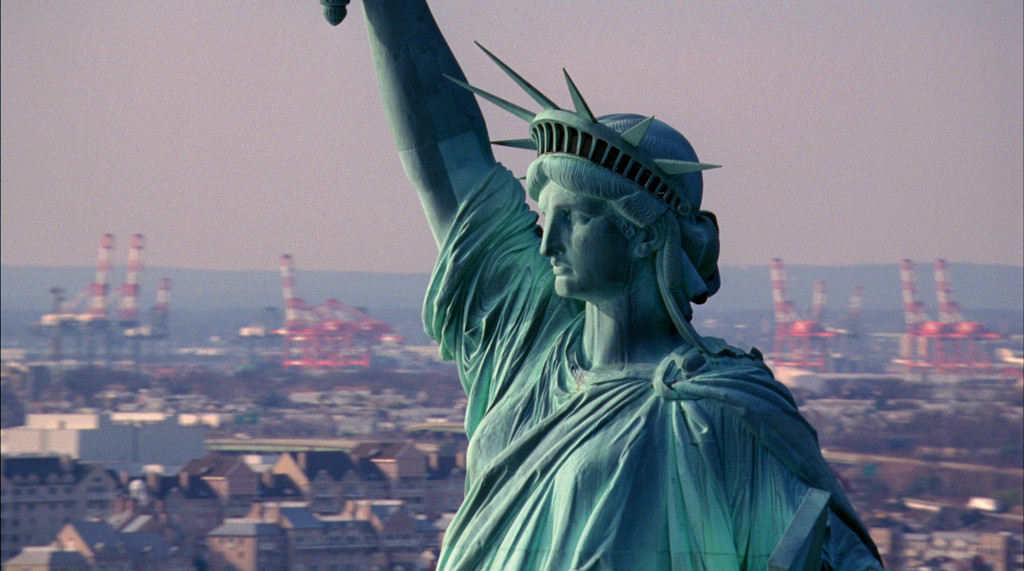[ad_1]
Winter is fast-approaching, and so too are some of the first major shows of 2020. To survey the forthcoming season, ARTnews has assembled a guide to 19 of the most-anticipated museum shows and biennials. Among them are the 2020 Bienal de São Paulo, which will take place in an expanded format, and the opening of the Momentary, a 63,000-square-foot space under the umbrella of the Crystal Bridges Museum of American Art in Bentonville, Arkansas. See these highlights and more, below.
Spotlight
Steve McQueen
Tate Modern, London
February 13–May 11
When Steve McQueen ascended the Academy Awards stage in 2014 to accept his Oscar for Best Picture, for 12 Years a Slave, he’d already won the U.K. art world’s most coveted award for visual art—the Turner Prize—for his spare videos featuring black subjects. Tate Modern is paying homage to McQueen the visual artist with a full-on survey of his video installations intended for galleries, among them Static (2009), in which a camera swirls around the Statue of Liberty for seven minutes. This is the first time in two decades that McQueen’s art has been surveyed in his home country.

Courtesy Kunstmuseum Basel/©ProLitteris, Zurich
December
“Circular Flow: On the Economy of Inequality”
Kunstmuseum Basel, Switzerland
December 7–May 3
If the title of this show sounds more like an elaborate infographic, that’s no accident. In our times of globalism, post-colonialism, and late capitalism, it’s all connected. New works by Simon Denny, Cameron Rowland, Wang Bing, Richard Mosse, draw out complex cause-and-effect relationships.
Gego
Museu de Arte de São Paulo
December 13–March 1
During her long lifetime—she died in 1994 at age 82—Gertrud Louise Goldschmidt, the Venezuelan artist known as Gego, did not achieve art world fame. That has changed in recent years, in a general shift toward art-historical rediscovery. New York Times critic Roberta Smith has written that Gego’s sculptures, made of intertwining fibers and wires, are “ever more prescient.” This traveling retrospective, which includes site-specific installations, prints, drawings, and more, cements her status as one of the most important Latin American artists of all time.

Courtesy Thierry Goldberg Gallery/Acquavella Galleries
January
“Tschabalala Self: Out of Body”
Institute of Contemporary Art, Boston
January 20–July 5
Few young artists working today have drummed up as much excitement as Tschabalala Self, whose paintings of people in and around Harlem, where she was born and raised, often feature figures that appear to split open or fold into one another. This exhibition, her largest to date, offers a valuable look at an artist on the cusp of widespread fame.
“Picasso and Paper”
Royal Academy of Arts, London
January 25–April 13
Picasso’s paintings tend to steal the show, such works as Guernica and Les Demoiselles d’Avignon needing no introduction. His works on paper have historically had a quieter reception, but the 300 works in this show make the case for Picasso the printmaker, draughtsman, and paper sculptor. Key loans are on the menu, like the 16-foot-wide collage Women at Their Toilette (1937–38), making its way to the U.K. from Paris’s Musée Picasso for the first time in 50 years.
“Tishan Hsu: Liquid Circuit”
Hammer Museum, Los Angeles
January 26–April 19
Tishan Hsu’s idiosyncratic sculptures and paintings may have been largely overlooked when he was getting started in the 1970s and ’80s in New York, but now his assemblages featuring faux body parts and warping abstract patterns are turning up everywhere, with critics noting the many ways they anticipate today’s work concerning technology and biology. Last spring, he had his first-ever shows in Asia (both in Hong Kong), and now he’s getting his first U.S. survey, featuring 30 wall reliefs, sculptures, drawings, and media works. The show will travel to New York’s SculptureCenter after its run in Los Angeles.

©2019 Heirs of Josephine Hopper and ProLitteris, Zurich/ Whitney Museum of American Art, licensed by Scala
Edward Hopper
Fondation Beyeler, Riehen, Switzerland
January 26–May 17
Last year, Chop Suey, one of Edward Hopper’s most iconic canvases, sold at Christie’s New York for a whopping $92 million. It’s just one sign of Hopper mania—which may have something to do with how the distinctly American angst in his paintings resonates in today’s social and political climate. The Fondation Beyeler survey includes peak Hopper: his paintings made between the 1910s and 1960s.
“Sahel: Art and Empires on the Shores of the Sahara”
Metropolitan Museum of Art, New York
January 30–May 10
The southern part of the Sahara Desert, known as the Sahel, is a semi-arid region occupying nearly 1.2 million miles. With important works on loan from Senegal, Mali, and Niger, dating back to the fourth century, this 150-work exhibition will show how a previously understudied trade route in Africa transformed the continent’s art as it exists today; included are pieces crafted from wood, clay, and stone, as well as illuminated manuscripts and textiles.
[ad_2]
Source link

